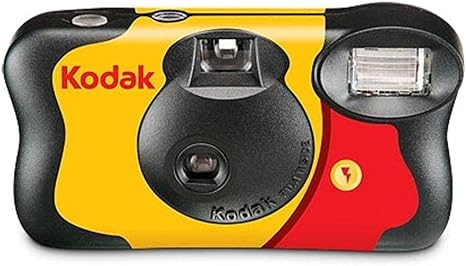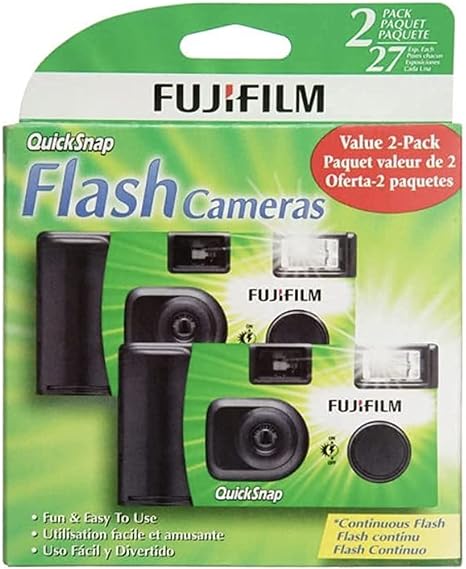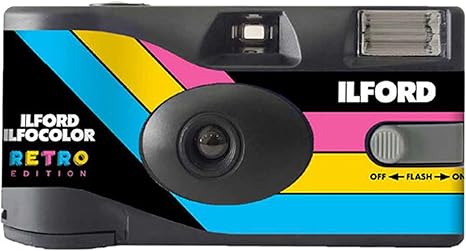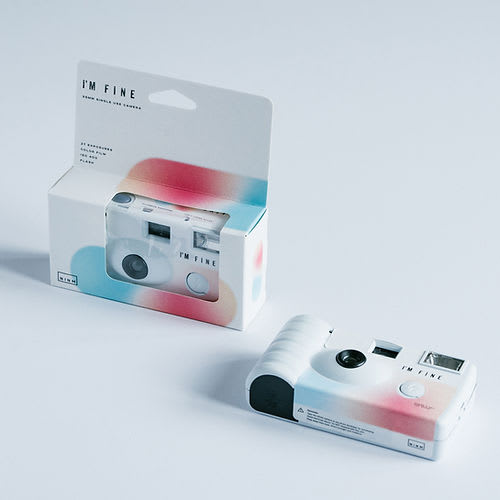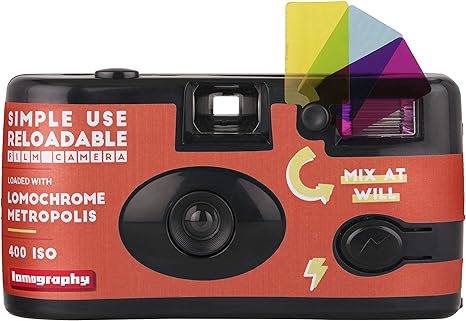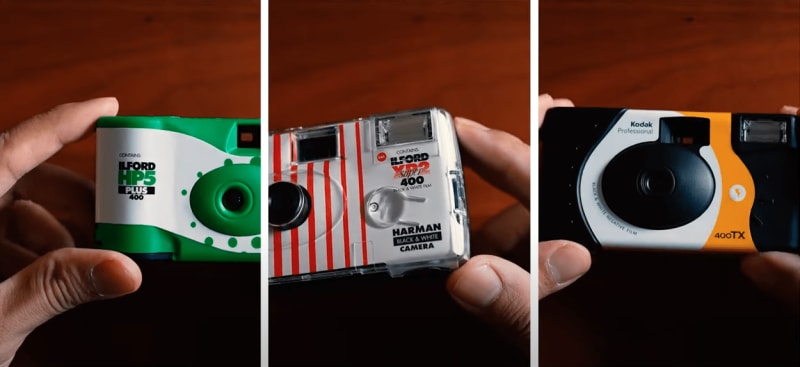This camera is a popular choice, and it typically costs around $15 to $20. While it's not the cheapest option, it's quite common these days. The build quality is okay, considering it's all plastic. However, the labels weren't applied properly. Despite this, it did the job well for one-time use. The pictures had realistic colors, and the optics were reasonably sharp. Notably, it's the only camera on the list with ISO 800, which is great for low-light situations. Overall, it's easy to use.
This is the second most popular choice and is priced similarly to the Kodak. It feels a bit cheap in terms of build quality and has a less responsive shutter button. The viewfinder isn't great, and the framing of photos can be slightly different. However, the film's colors are impressive, and it has a good dynamic range for an ISO 400 film, making it suitable for low-light conditions.
This camera stands out with its cool design. It costs around $18 and delivers vibrant colors, though with slightly less dynamic range compared to the Fuji. It struggles in low-light conditions due to a weak flash powered by AAA batteries.
This lesser-known camera uses Kodak 400 film and shares similarities with the Ilford XP2 in terms of image quality. The images are similar to the Kodak Fun Saver, but it's the most expensive option at $27, without offering significant advantages.
If you're interested in black and white, the Ilford HP5 Plus, Ilford XP2, and Kodak Triax 400 are all affordable options around $13 to $14. Each has its strengths and weaknesses. The Kodak offers excellent optics and sharpness, while the HP5 provides deep blacks and good dynamic range. The XP2 can be processed through C41, making it cost-effective.
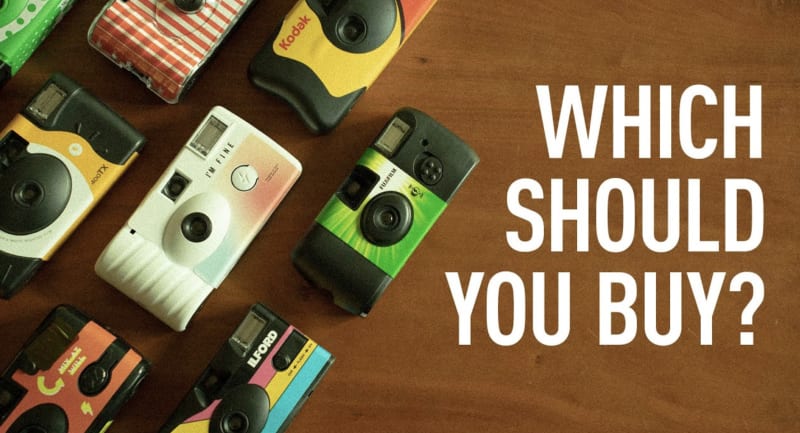
 Kodak Funsaver
Kodak Funsaver Fujifilm Quick Snap
Fujifilm Quick Snap Ilford Ilfocolor Rapid Retro Edition
Ilford Ilfocolor Rapid Retro Edition NIMN Lab I'm Fine Aura
NIMN Lab I'm Fine Aura Lomography Lomo Chrome Metropolis
Lomography Lomo Chrome Metropolis Black & White Film Cameras
Black & White Film Cameras